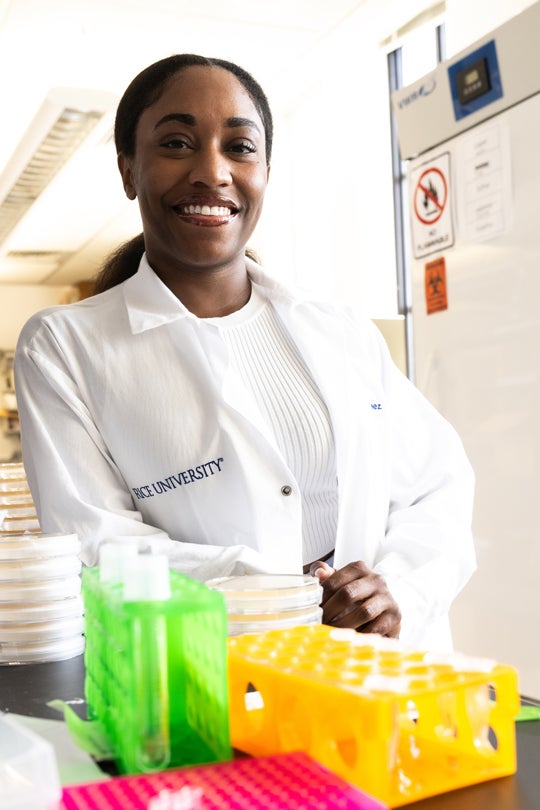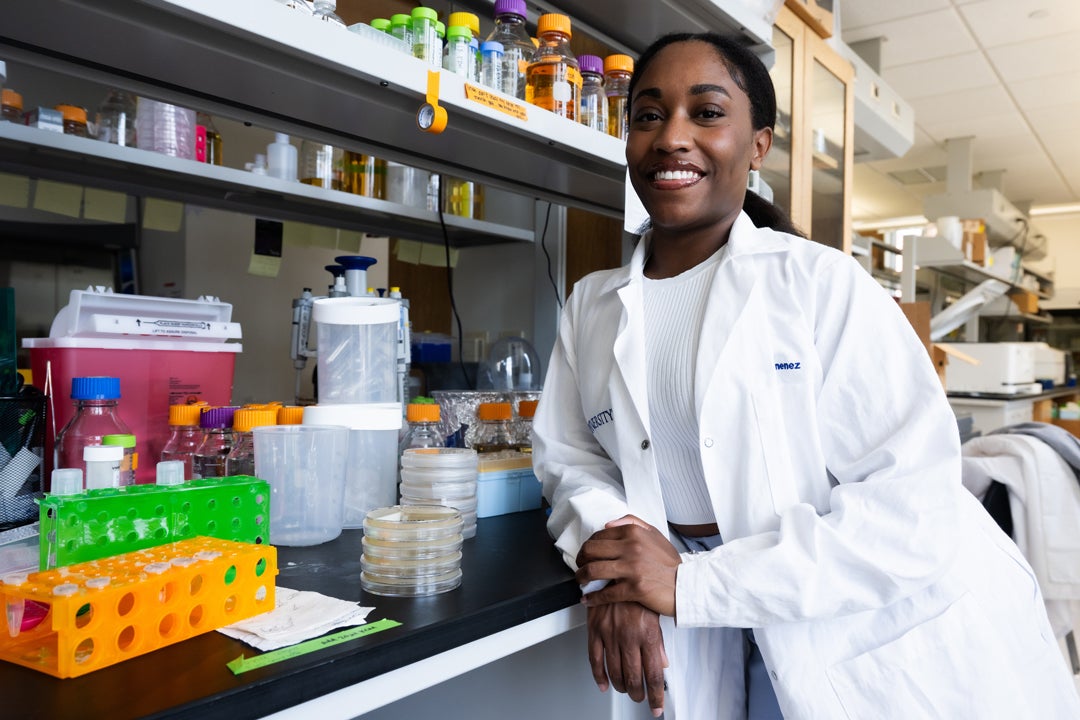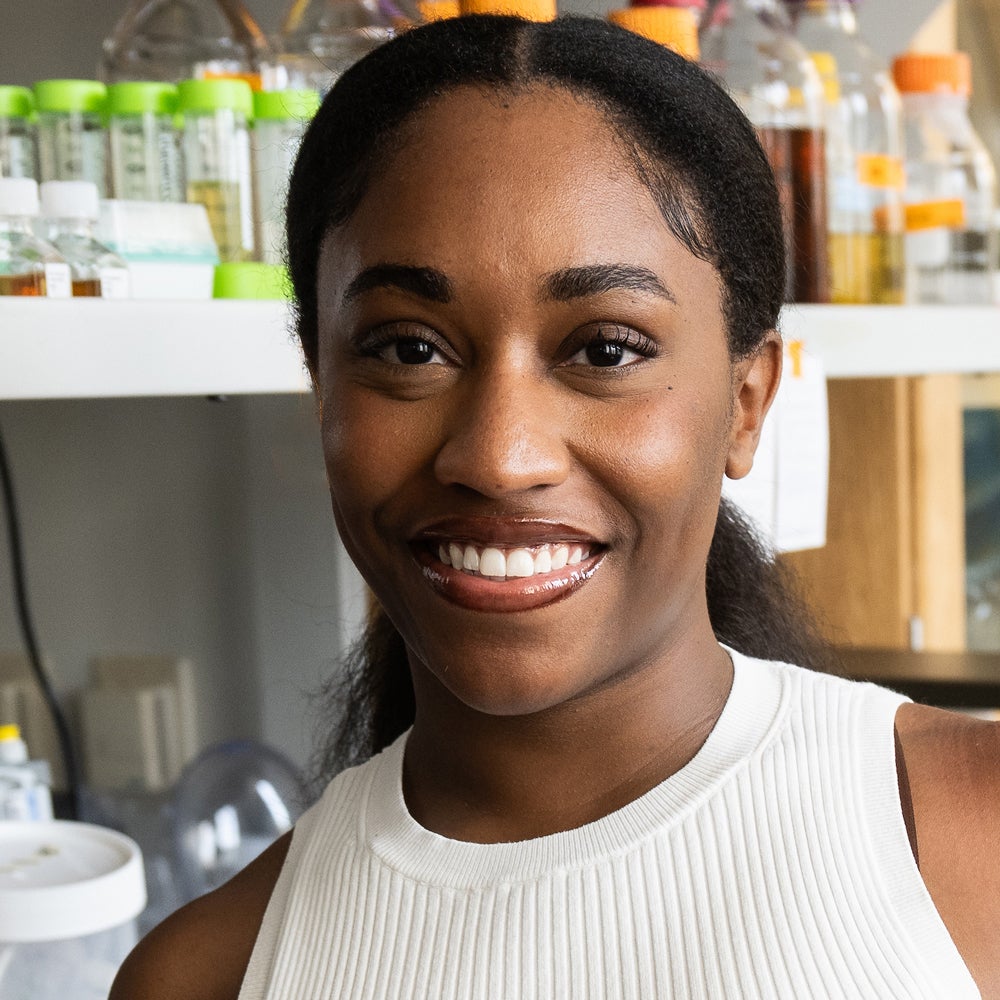
In the lab of professor Caroline Ajo-Franklin, researchers aim to replicate nature’s ability to build strong, sustainable structures. Their engineered living materials are often composed of living microbes and the proteins they secrete, and they could one day replace resources like wood and cotton with environmentally friendly alternatives.
For graduate student Olivia Suggs, that mission led to a surprising discovery. While working to understand how proteins organize themselves into larger structures, she stumbled upon evidence that the lab’s engineered proteins were assembling into amyloid-like fibrils rather than the crystalline lattices the group had expected.
“I thought I had ruined my experiment,” she recalled. After centrifuging her protein sample, she saw visible fibers clumped at the bottom of the tube. But instead of discarding them, she decided to test their properties and soon realized she had found something remarkable.
To establish what she was looking at, Olivia purified the protein outside the cell to see how it behaved on its own. What emerged was a set of behaviors consistent with amyloids: The fibers formed tightly folded, rigid sheets that resisted heat and chemical treatments but dissolved almost immediately in a solvent known to disrupt β-sheet structures. “Within two minutes, it was gone,” she said.
The team looked at sequence motifs and structural analyses to bolster its case. “You have to collect all these pieces of evidence before you can definitively say you have an amyloid,” Olivia explained. “Do you have the sequences that tend to form amyloids? Do you have the high β-sheet content?
“All signs are pointing in that direction very strongly right now, ” she said, noting that the team is hoping to confirm the findings with transmission electron microscopy.

The discovery reveals how small engineering choices can dramatically change the way proteins assemble. Though unexpected, it wasn’t a fluke; it revealed a fundamental principle of how protein assembly can be rewired. The team’s engineered surface-layer protein normally organizes into a polycrystalline lattice around the cell. But by inserting an elastin-like polypeptide domain, they altered its interactions. “We are changing that native polycrystalline lattice into something that’s more amyloid-like,” Olivia said. “We completely altered the mechanism of assembly from one ordered mechanism to another ordered mechanism.”

For the field of engineered living materials, that insight is crucial. It offers a set of design rules for how proteins can be tuned to create new material properties. While amyloid-like assemblies are often associated with neurodegenerative disease in humans, in bacteria they are the backbones for strong, resilient and even functional materials, like the colorful microbial mats seen in the geysers and hot springs of Yellowstone National Park.
“Typically, when we talk about amyloids, we talk about them in the pathological context, but this would be an example of a more functional amyloid,” Olivia said regarding the engineered living materials.
Moving forward, the team plans to expand its research by investigating different microorganisms and environments, as the host bacterium is just as important as engineering the protein itself. For example, they are exploring extremophiles that can withstand very high temperatures, as well as bacteria that thrive in saline, acidic or basic environments. Another exciting direction is co-culturing a photosynthetic organism with their current system to see what new properties might arise.
As the team explores these new frontiers, Olivia is also charting her own future, seeking to apply her scientific training to broader impacts like policy and communication. But for now, her accidental discovery isn’t just laying the foundation for new materials: It’s redefining what we thought was possible.

